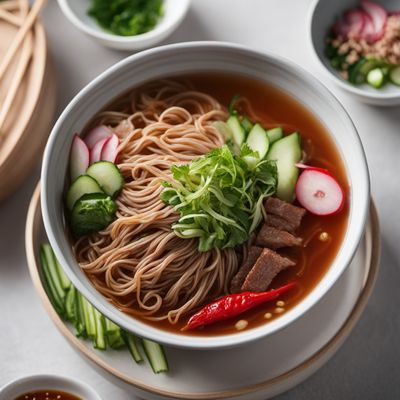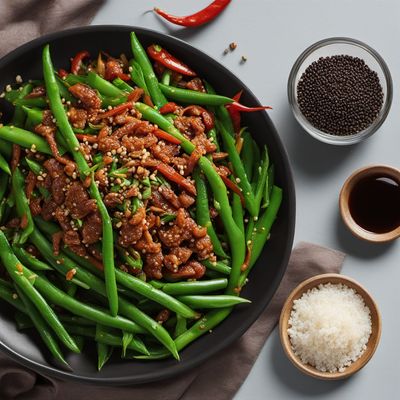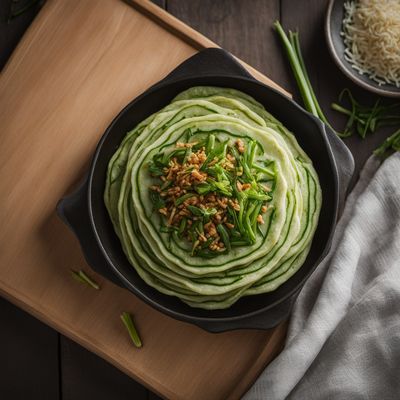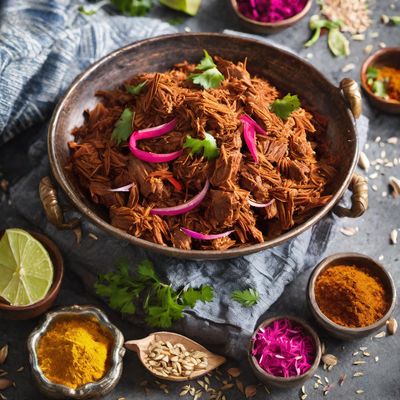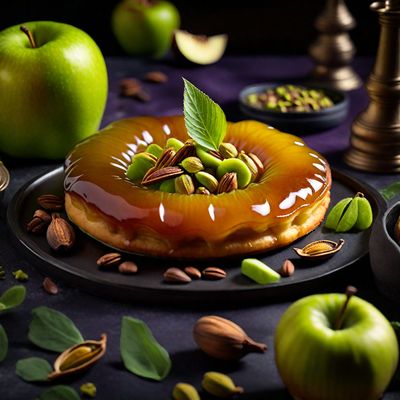
Recipe
Arab-Style Bibimbap
Saffron-infused Arab Bibimbap: A Fusion of Flavors
4.9 out of 5
In the vibrant world of Arab cuisine, we bring you a delightful twist on the classic Korean dish, Bibimbap. This Arab-style Bibimbap combines the rich flavors of the Middle East with the colorful and nutritious elements of the original dish. Get ready to indulge in a harmonious blend of spices, aromatic herbs, and wholesome ingredients.
Metadata
Preparation time
20 minutes
Cooking time
20 minutes
Total time
40 minutes
Yields
4 servings
Preparation difficulty
Medium
Suitable for
Vegetarian, Vegan, Gluten-free, Dairy-free, Nut-free
Allergens
N/A
Not suitable for
Paleo, Keto, Low-carb, High-protein, Atkins
Ingredients
While the original Korean Bibimbap features ingredients like gochujang and kimchi, our Arab adaptation incorporates flavors such as saffron, cumin, and sumac. We also substitute traditional Korean vegetables with Middle Eastern favorites like eggplant, zucchini, and bell peppers. The result is a unique fusion dish that celebrates the best of both cuisines. We alse have the original recipe for Bibimbap, so you can check it out.
-
2 cups (470ml) cooked rice 2 cups (470ml) cooked rice
-
1 tablespoon olive oil 1 tablespoon olive oil
-
1 onion, thinly sliced 1 onion, thinly sliced
-
2 cloves garlic, minced 2 cloves garlic, minced
-
1 eggplant, cut into thin strips 1 eggplant, cut into thin strips
-
1 zucchini, cut into thin strips 1 zucchini, cut into thin strips
-
1 red bell pepper, thinly sliced 1 red bell pepper, thinly sliced
-
1 yellow bell pepper, thinly sliced 1 yellow bell pepper, thinly sliced
-
1 teaspoon ground cumin 1 teaspoon ground cumin
-
1/2 teaspoon ground coriander 1/2 teaspoon ground coriander
-
1/2 teaspoon ground turmeric 1/2 teaspoon ground turmeric
-
1/4 teaspoon ground cinnamon 1/4 teaspoon ground cinnamon
-
1/4 teaspoon ground sumac 1/4 teaspoon ground sumac
-
A pinch of saffron threads, soaked in 2 tablespoons warm water A pinch of saffron threads, soaked in 2 tablespoons warm water
-
Salt and pepper to taste Salt and pepper to taste
-
Fresh parsley, chopped (for garnish) Fresh parsley, chopped (for garnish)
Nutrition
- Calories (kcal / KJ): 320 kcal / 1340 KJ
- Fat (total, saturated): 8g, 1g
- Carbohydrates (total, sugars): 58g, 8g
- Protein: 6g
- Fiber: 8g
- Salt: 1g
Preparation
-
1.Heat olive oil in a large skillet over medium heat. Add the sliced onion and minced garlic, and sauté until golden brown.
-
2.Add the eggplant, zucchini, and bell peppers to the skillet. Cook until the vegetables are tender.
-
3.In a small bowl, mix together the ground cumin, coriander, turmeric, cinnamon, sumac, saffron (including the soaking water), salt, and pepper.
-
4.Add the spice mixture to the skillet and stir well to coat the vegetables evenly. Cook for an additional 2-3 minutes.
-
5.Divide the cooked rice into serving bowls. Top with the spiced vegetable mixture.
-
6.Garnish with fresh parsley and serve hot.
Treat your ingredients with care...
- Eggplant — To reduce bitterness, sprinkle salt over the sliced eggplant and let it sit for 10 minutes before cooking.
- Saffron — Soak the saffron threads in warm water for at least 10 minutes to release their vibrant color and aroma.
- Sumac — Use ground sumac for a tangy and slightly citrusy flavor. It can be found in Middle Eastern grocery stores or online.
- Cumin — Toasting whole cumin seeds and grinding them fresh will enhance the flavor of the dish.
- Rice — Use long-grain rice for the best texture and fluffiness.
Tips & Tricks
- For added crunch, sprinkle some toasted pine nuts or slivered almonds on top before serving.
- Customize your Arab-style Bibimbap by adding grilled chicken, beef, or tofu for extra protein.
- Drizzle some tahini or yogurt sauce over the dish for a creamy and tangy touch.
- Experiment with different Middle Eastern spices like za'atar or baharat to create your own flavor profile.
- Make a larger batch of the spiced vegetable mixture and use it as a filling for wraps or sandwiches.
Serving advice
Serve the Arab-style Bibimbap hot, allowing the flavors to meld together. Encourage your guests to mix the rice and vegetables thoroughly to distribute the spices evenly. This dish pairs well with a side of fresh salad or pickled vegetables.
Presentation advice
Present the Arab-style Bibimbap in individual bowls, showcasing the vibrant colors of the vegetables against the fluffy rice. Garnish with a sprinkle of fresh parsley for a pop of green. For an elegant touch, serve the dish on a decorative Middle Eastern-inspired platter.
More recipes...
For Bibimbap » Browse all
For Korean cuisine » Browse all
More Korean cuisine dishes » Browse all

Dassima-bokkeum
Seaweed Stir-Fry
Dassima-bokkeum, also known as stir-fried kelp, is a Korean side dish. It is made with kelp, garlic, and a savory sauce.

Kimbap
Kimbap is a Korean dish that consists of rice, vegetables, and meat rolled in seaweed.
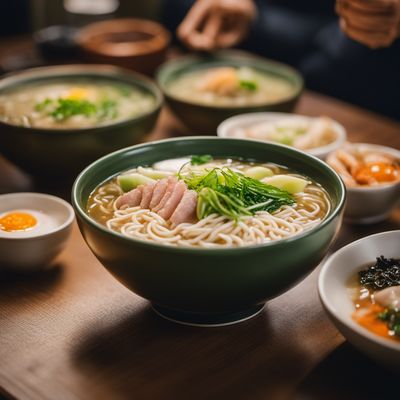
Onmyeon
Cold noodle soup
Onmyeon is a Korean cold noodle dish that is perfect for hot summer days. The dish is made with thin, chewy noodles made from wheat flour, potato...



